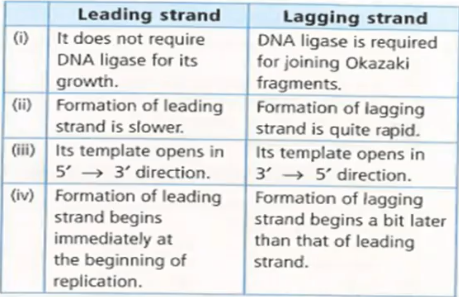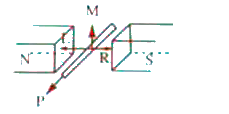Discuss differences between blunt ends and sticky ends of DNA.
Step-by-Step Solution:
1. Definition of Sticky Ends:
- Sticky ends are the result of staggered cuts made by restriction enzymes (RE) in the DNA. This means that the cuts do not occur at the same position on both strands, leading to overhanging sequences.
2. Definition of Blunt Ends:
- Blunt ends are produced when restriction enzymes make straight cuts across both strands of DNA at the same position. This results in no overhanging sequences.
3. Cut Type:
- Sticky Ends: The restriction enzymes create staggered cuts, resulting in a 5' or 3' overhang.
- Blunt Ends: The restriction enzymes create straight cuts, resulting in no overhangs.
4. Overhangs:
- Sticky Ends: They have overhanging sequences, which can easily pair with complementary sequences of other DNA strands.
- Blunt Ends: They do not have overhangs, meaning they cannot easily pair with other DNA strands without additional processing.
5. Cohesiveness:
- Sticky Ends: They are referred to as cohesive ends because they can easily form hydrogen bonds with complementary sticky ends from other DNA fragments.
- Blunt Ends: They are considered non-cohesive ends because they do not have the ability to form hydrogen bonds in the same way as sticky ends.
6. Applications:
- Sticky Ends: Often used in cloning and recombinant DNA technology because they facilitate the ligation of DNA fragments.
- Blunt Ends: Can also be used in cloning, but require more precise conditions for ligation since they do not have the same cohesive properties.
Summary of Differences:
- Cut Type: Sticky ends (staggered cuts) vs. Blunt ends (straight cuts).
- Overhangs: Sticky ends have overhangs; blunt ends do not.
- Cohesiveness: Sticky ends are cohesive; blunt ends are non-cohesive.
- Sticky ends are the result of staggered cuts made by restriction enzymes (RE) in the DNA. This means that the cuts do not occur at the same position on both strands, leading to overhanging sequences.
- Blunt ends are produced when restriction enzymes make straight cuts across both strands of DNA at the same position. This results in no overhanging sequences.
- Sticky Ends: The restriction enzymes create staggered cuts, resulting in a 5' or 3' overhang.
- Blunt Ends: The restriction enzymes create straight cuts, resulting in no overhangs.
- Sticky Ends: They have overhanging sequences, which can easily pair with complementary sequences of other DNA strands.
- Blunt Ends: They do not have overhangs, meaning they cannot easily pair with other DNA strands without additional processing.
- Sticky Ends: They are referred to as cohesive ends because they can easily form hydrogen bonds with complementary sticky ends from other DNA fragments.
- Blunt Ends: They are considered non-cohesive ends because they do not have the ability to form hydrogen bonds in the same way as sticky ends.
- Sticky Ends: Often used in cloning and recombinant DNA technology because they facilitate the ligation of DNA fragments.
- Blunt Ends: Can also be used in cloning, but require more precise conditions for ligation since they do not have the same cohesive properties.
- Cut Type: Sticky ends (staggered cuts) vs. Blunt ends (straight cuts).
- Overhangs: Sticky ends have overhangs; blunt ends do not.
- Cohesiveness: Sticky ends are cohesive; blunt ends are non-cohesive.
Topper's Solved these Questions
- BIOTECHNOLOGY : PRINCIPLES AND PROCESSESBOOK - ICSECHAPTER - BIOTECHNOLOGY : PRINCIPLES AND PROCESSESEXERCISE - PRACTICE QUESTIONS (LONG ANSWER TYPE-I QUESTIONS)
8 Videos
- BIOTECHNOLOGY : PRINCIPLES AND PROCESSESBOOK - ICSECHAPTER - BIOTECHNOLOGY : PRINCIPLES AND PROCESSESEXERCISE - PERVIOUS YEARS. BOARD PAPER QUESTIONS (Very Short Answer Type Questions )
4 Videos
- BIOTECHNOLOGY : PRINCIPLES AND PROCESSESBOOK - ICSECHAPTER - BIOTECHNOLOGY : PRINCIPLES AND PROCESSESEXERCISE - PRACTICE QUESTIONS (SHORT ANSWER TYPE-I QUESTIONS)
13 Videos
- BIOLOGY-2016BOOK - ICSECHAPTER - BIOLOGY-2016EXERCISE - PART-II ( SECTION-C)
9 Videos
- BIOTECHNOLOGY AND ITS APPLICATIONS BOOK - ICSECHAPTER - BIOTECHNOLOGY AND ITS APPLICATIONS EXERCISE - COMPETITION CORNER (OBJECTIVE TYPE QUESTIONS (ASSERTION AND REASON TYPE QUESTIONS))
9 Videos
Similar Questions
Knowledge Check
The difference between RNA and DNA is because of :
Asugar and baseBsugar and phosphateCphosphate and baseDsugar onlyWhich of the following differences are incorrect between leading and lagging strands of DNA ?
 A(ii) and (iv) onlyB(ii),(iii) and (iv) onlyC(ii) and (iii) onlyD(i), (ii) and (iii) only
A(ii) and (iv) onlyB(ii),(iii) and (iv) onlyC(ii) and (iii) onlyD(i), (ii) and (iii) only
If V is the potential difference between the ends of conductor and l is the current through it, then ohm's law states that
View SolutionThe slant height of the frustum of a cone is 5 cm. If the difference between the radii of its two circular ends is 4 cm, write the height of the frustum.
View SolutionAt the open end of organ pipe
View SolutionThe main difference between DNA and RNA is _______
View SolutionThree identical metal rods A, B and C are placed end to end and a temperature difference is maintained between the free ends of A and C. If the thermal conductivity of B(KB) is thrice that of C(KC) and half that of A(KA), (KA=49w/mK) calculate the effective thermal conductivity of the system ?
View SolutionAn electric potential difference will be induced between the ends of the conductor shown in the figure, if the conductor moves in the direction shown by

View Solution
